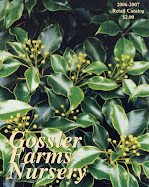Jardim Botânico da Universidade de Lisboa 2012 março
Rondeletia amoena, Jardim Botânico da Universidade de Lisboa 2012 março
Jardim Botânico da Universidade de Lisboa 2012 março
Senecio petasites, Eucalyptus, Jardim Botânico da Universidade de Lisboa 2012 março
Dracaena draco, Jardim Botânico da Universidade de Lisboa 2012 março
Click here for more photos of the Jardim Botânico da Universidade de Lisboa.
The Jardim Botânico da Universidade de Lisboa is a scientific garden that was designed in the mid-19th century to complement botanical teaching and research. Planting was begun in 1873. An enormous diversity of plants were collected by its first gardeners from Portuguese colonies around the world. Most of the garden flows down a hillside with walks, stairs, terraces, ponds & flowing water. It's a bit of a wonderland, a green oasis in the heart of Lisbon, lush & thick with plants, hidden within the busy city near the Avenida Metro Station. The present garden has species from New Zealand, Australia, China, Japan and South America which flourish in the mild Lisbon climate. Many of the plants are quite mature. There are huge Eucalyptus & palm trees, as well as succulents, bromeliads, many Cycads & Mediterranean Fan Palms (Chamaerops humilis) & flowering shrubs I had never seen before.
Click here for more photos of the Jardim Botânico da Universidade de Lisboa.
The Jardim Botânico da Universidade de Lisboa is a scientific garden that was designed in the mid-19th century to complement botanical teaching and research. Planting was begun in 1873. An enormous diversity of plants were collected by its first gardeners from Portuguese colonies around the world. Most of the garden flows down a hillside with walks, stairs, terraces, ponds & flowing water. It's a bit of a wonderland, a green oasis in the heart of Lisbon, lush & thick with plants, hidden within the busy city near the Avenida Metro Station. The present garden has species from New Zealand, Australia, China, Japan and South America which flourish in the mild Lisbon climate. Many of the plants are quite mature. There are huge Eucalyptus & palm trees, as well as succulents, bromeliads, many Cycads & Mediterranean Fan Palms (Chamaerops humilis) & flowering shrubs I had never seen before.












































































